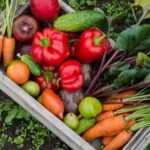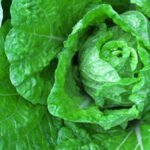Sonoran Desert Vegetable Gardening offers a unique and charming opportunity to connect with nature and harvest fresh, homegrown produce in one of the harshest environments on Earth. With its extreme heat, limited rainfall, and arid sandy soils, the Sonoran Desert presents numerous challenges for vegetable gardening. However, with the right knowledge and techniques, it is possible to create a thriving oasis of green amidst this harsh landscape.
In this article, we will explore the world of Sonoran Desert Vegetable Gardening and uncover the key factors that influence its success. We will delve into the various strategies and adaptations that allow certain vegetables to thrive in this environment while others struggle. From understanding the unique ecosystem of the Sonoran Desert to choosing heat-tolerant varieties and preparing the soil, we will guide you through every step of creating a flourishing vegetable garden in this unforgiving desert.
One of the main challenges faced by gardeners in the Sonoran Desert is water scarcity. With minimal annual rainfall and high evaporation rates, watering plants can be a daunting task.
However, we will introduce you to water-wise techniques such as drip irrigation and xeriscaping that can help you conserve water while still providing your plants with the hydration they need to thrive. Additionally, we will provide tips on how to care for your plants in this specific desert climate, as well as methods for managing common pests and diseases that may plague your vegetable garden.
Join us on this journey as we discover how to make the most of Sonoran Desert Vegetable Gardening. From selecting the right vegetables to nurturing them through their growth stages, harvesting bountiful yields, and hearing inspiring success stories from other gardeners who have conquered these challenging conditions – together, let us embrace both the beauty and bounty offered by this unique form of gardening.
Understanding the Sonoran Desert Ecosystem
The Sonoran Desert is a unique and captivating ecosystem that poses specific challenges and considerations for vegetable gardening. Understanding the key factors that influence plant growth in this arid region is crucial for successful gardening endeavors. This section will delve into the various aspects of the Sonoran Desert ecosystem and how they affect vegetable gardening.
Climate
One of the primary factors influencing vegetable gardening in the Sonoran Desert is the climate. The Sonoran Desert experiences extreme temperature variations, with scorching hot summers and mild winters. These temperature extremes can be challenging for plants to tolerate, especially non-native species. It is important to choose heat-tolerant vegetables that are adapted to these conditions.
Moreover, the Sonoran Desert has a distinct dry season with minimal precipitation. This arid climate requires gardeners to adopt water-wise techniques that conserve water and prioritize efficient irrigation methods. Drip irrigation systems are particularly beneficial in this region as they deliver water directly to the plant roots, minimizing water loss through evaporation.
Soil Composition
The soil composition in the Sonoran Desert is characterized by aridity and sandiness. Its low organic matter content, high alkalinity, and poor water-holding capacity present challenges for growing vegetables. To overcome these obstacles, it is essential to amend the soil with organic matter such as compost or well-rotted manure to improve its fertility and moisture retention abilities.
Additionally, incorporating mineral amendments like gypsum can help combat high soil alkalinity common in desert regions. Before planting, testing the soil pH and nutrient levels is advisable to ensure proper balance for optimal vegetable growth.
Biological Interactions
Vegetable gardening in the Sonoran Desert also involves navigating interactions with native flora and fauna. Understanding these biological relationships can help gardeners create harmonious ecosystems that benefit both cultivated plants and their natural surroundings.
Invasive plant species pose a significant threat to the Sonoran Desert ecosystem. As a responsible gardener, it is important to educate oneself on invasive species in the area and take measures to prevent their introduction or spread. Additionally, creating habitat features in your garden that attract pollinators and beneficial insects can promote natural pest control and enhance plant vitality.
By considering the unique factors of the Sonoran Desert ecosystem such as climate, soil composition, and biological interactions, vegetable gardeners can make informed choices and implement strategies that better align with this distinct environment. With proper understanding and careful planning, you can create a thriving vegetable garden that harmoniously coexists with the captivating Sonoran Desert landscape.
Choosing the Right Vegetables for Sonoran Desert Gardening
When it comes to vegetable gardening in the Sonoran Desert, selecting the right vegetables is crucial for success. The extreme heat and arid conditions of this region create unique challenges that require specific adaptations in order for plants to thrive. Choosing heat-tolerant varieties and implementing certain techniques can help overcome these obstacles.
One key factor in choosing the right vegetables for Sonoran Desert gardening is heat tolerance. Since the temperatures in this region can soar to over 100 degrees Fahrenheit (37 degrees Celsius) during the summer months, it is important to select plants that can withstand such extreme conditions. Some popular options include tomatoes, peppers, eggplants, and okra, which are known for their ability to tolerate high temperatures.
Another consideration when choosing vegetables for Sonoran Desert gardening is water requirements. Due to limited water availability in this arid environment, it is important to select plants that are well-adapted to drought conditions. Drought-tolerant vegetables such as sweet potatoes, Swiss chard, and certain types of beans are ideal choices for this region. These plants have developed mechanisms to conserve water and can survive with less frequent watering.
| Heat-Tolerant Vegetables | Description |
|---|---|
| Tomatoes | There are many sun-loving tomato varieties available that can handle extreme temperatures. |
| Peppers | Hot peppers like jalapenos and chili peppers thrive in hot climates. |
| Eggplants | Eggplants are heat-loving vegetables that can tolerate high temperatures. |
| Okra | Okra is a heat-tolerant vegetable that thrives in hot and humid climates. |
In addition to selecting the right vegetables, implementing certain adaptations in your gardening practices can also enhance your chances of success. Providing shade for your plants during the hottest part of the day, using organic mulch to conserve moisture in the soil, and practicing proper spacing between plants to improve airflow are some strategies that can help mitigate the effects of extreme heat.
By carefully selecting heat-tolerant vegetable varieties and implementing appropriate adaptations, Sonoran Desert gardeners can enjoy a bountiful harvest even in such harsh conditions. It is important to experiment with different varieties and techniques to find what works best for your specific microclimate. With some patience and creativity, you can create a thriving vegetable garden in the unique charm of the Sonoran Desert.
Preparing the Soil
When it comes to vegetable gardening in the Sonoran Desert, one of the biggest challenges that gardeners face is the arid and sandy soil conditions. The desert soil tends to have poor fertility and lack organic matter, making it challenging for vegetables to thrive. However, with proper soil preparation techniques, these challenges can be overcome, allowing gardeners to create a fertile environment that supports healthy plant growth.
Soil Testing: Understanding Your Soil Composition
Before you begin preparing your soil, it’s important to understand its composition. Conduct a soil test to determine the pH level and nutrient deficiencies or imbalances. This will guide you in making informed decisions about which amendments to add to improve your soil quality. Adding organic matter such as compost or well-rotted manure can help increase fertility and moisture retention in sandy soils.
Amending the Soil: Improving Structure and Nutrition
To improve the structure of arid and sandy soils, incorporate organic matter into the soil. This can be done by adding compost, aged manure, leaf mold, or other organic materials. These additions will help break up compacted soil, improve water retention capacity, enhance drainage, and provide essential nutrients for plant growth. Consider using slow-release organic fertilizers that provide a steady supply of nutrients over time.
Mulching: Conserving Moisture and Preventing Erosion
In the Sonoran Desert climate where water conservation is critical, mulching plays a vital role in retaining moisture and preventing erosion. Apply a layer of organic mulch around plants to conserve moisture by reducing evaporation from the soil surface. Mulch also helps regulate soil temperature and suppress weed growth. Use materials like straw, wood chips, or shredded leaves as mulch in your vegetable garden.
By following these soil preparation techniques, you can create a more suitable growing environment for your vegetables in the Sonoran Desert. Understanding and addressing the challenges of arid and sandy soils is crucial for successful vegetable gardening in this unique ecosystem. With proper soil preparation, you will be well on your way to a thriving and productive vegetable garden.
Water-Wise Techniques for Successful Vegetable Gardening in the Sonoran Desert
In the Sonoran Desert, where water is scarce and temperatures can soar, implementing water-wise techniques is crucial for successful vegetable gardening. Two techniques that have proven to be effective in conserving water and supporting healthy plant growth are drip irrigation and xeriscaping.
Drip irrigation is a method of delivering water directly to the base of plants, minimizing evaporation and reducing water waste. In this technique, small tubes or emitters are placed near each plant, delivering a slow and steady supply of water to the root zone.
Drip irrigation ensures that plants receive the necessary moisture without overwatering, making it perfect for the arid conditions of the Sonoran Desert. Additionally, it helps prevent weed growth by targeting only the desired plants, thus reducing competition for resources.
Xeriscaping is another water-wise technique that involves designing landscapes with drought-tolerant plants to minimize or eliminate the need for supplemental watering. By selecting native plants that are well-adapted to desert conditions, gardeners can conserve water while still enjoying a beautiful garden.
Xeriscaping also involves incorporating mulch or rocks into the landscape design to reduce evaporation and maintain soil moisture levels. This technique not only saves water but also requires less maintenance as drought-tolerant plants generally require minimal care.
Implementing these water-wise techniques not only conserves precious resources but also promotes healthy plant growth in Sonoran Desert vegetable gardens. By using drip irrigation and xeriscaping methods, gardeners can create a sustainable environment for their crops while reducing their ecological footprint.
Nurturing Your Plants
In order to have a successful vegetable garden in the Sonoran Desert, it is important to understand and implement Sonoran Desert-specific care and maintenance tips. The extreme heat and arid conditions of the desert can pose challenges for plant growth, but with proper care, your vegetables can thrive. Here are some tips to help you nurture your plants in this unique environment:
- Provide Shade: One of the most important aspects of caring for your plants in the Sonoran Desert is providing them with shade. This is especially crucial during the hottest parts of the day when temperatures can reach scorching levels. You can create shade by using shade cloths, installing sun shades or umbrellas, or planting taller crops that will provide shade for shorter ones.
- Mulch Your Soil: Another important tip for nurturing your plants is to apply mulch to your soil. Mulch helps retain moisture, suppress weeds, and regulate soil temperature. In the Sonoran Desert, where water conservation is key, mulching can be particularly beneficial in reducing water evaporation from the soil.
- Protect From Pests: The desert environment is home to a variety of pests that can damage your vegetable plants. To protect your crops from common pests such as aphids, caterpillars, and whiteflies, use organic pest control methods such as introducing beneficial insects like ladybugs or maintaining healthy biodiversity in your garden.
In addition to these specific care and maintenance tips, it’s crucial to monitor your plants regularly for signs of stress or disease. The hot and dry conditions in the Sonoran Desert can cause plants to wilt quickly if they don’t receive enough water or if they are exposed to excessive heat. Regularly check the moisture levels of your soil and adjust irrigation accordingly.
By following these Sonoran Desert-specific care and maintenance tips, you can ensure that your vegetable garden thrives in this unique environment. With proper shading, mulching, pest management, and monitoring, your plants will have the best chance of producing a bountiful harvest despite the challenges posed by the desert climate.
Pest and Disease Management in Sonoran Desert Vegetable Gardens
Pest and disease management is a crucial aspect of successful vegetable gardening in the Sonoran Desert. While the unique climate of the region can present challenges, there are effective strategies for combatting common issues and ensuring healthy, thriving plants.
One of the most common pests in Sonoran Desert vegetable gardens is the spider mite. These tiny arachnids feed on the sap of plants, causing yellowing leaves, stunted growth, and webbing. To manage spider mites, it is important to regularly inspect plants for signs of infestation and take immediate action if detected. This can include using insecticidal soap or neem oil sprays, as well as introducing natural predators such as ladybugs or lacewings to control populations.
Another common pest issue in the Sonoran Desert is aphids. These small insects typically gather on the undersides of leaves, causing distorted growth and transmitting plant diseases. One effective method for managing aphids is to encourage natural predators like ladybugs or parasitic wasps by planting nectar-rich flowers nearby. Additionally, a strong blast of water from a hose can dislodge aphids from plants.
Diseases such as powdery mildew and bacterial spot can also pose challenges in Sonoran Desert vegetable gardens. Powdery mildew appears as a white, powdery substance on leaves and stems, while bacterial spot causes dark spots or lesions on foliage. To prevent these diseases, it is important to provide adequate air circulation by properly spacing plants and avoiding overhead watering. Fungicidal sprays can also be used as a preventative measure or at the first sign of infection.
By identifying common pests and diseases in Sonoran Desert vegetable gardens and implementing appropriate management strategies like those mentioned above, gardeners can ensure healthy plants and maximize their harvests. With proper care and attention to these issues, both novice and experienced gardeners can combat potential setbacks and enjoy bountiful yields in their Sonoran Desert vegetable gardens.
Harvesting and Enjoying the Fruits of Your Labor
Once you have successfully cultivated your vegetables in the Sonoran Desert, it’s time to reap the rewards of your hard work. In this section, we will explore best practices for harvesting and enjoying the fruits of your labor while maximizing yield and flavor in this unique ecosystem.
Timing the Harvest
One of the key factors in maximizing both yield and flavor is timing the harvest correctly. Different vegetables have different maturity dates, so it’s essential to know when each variety is ready for picking. For example, tomatoes should be harvested when they reach full color and can be easily plucked from the vine.
On the other hand, leafy greens like lettuce and spinach should be harvested by removing outer leaves as needed, allowing the center to continue growing. Regularly monitoring your plants and following specific guidelines for each vegetable will ensure that you pick them at their peak ripeness.
Proper Harvesting Techniques
To maximize yield and minimize damage to your plants, it is crucial to use proper harvesting techniques. Use a sharp knife or pair of garden shears to cut fruits or vegetables from branches or stems instead of pulling them off forcefully. This ensures a cleaner break and reduces stress on the plant. Additionally, handle produce with care to prevent bruising or crushing delicate crops such as berries or tender greens.
Storing and Preserving Your Harvest
After harvesting your delicious produce, it’s important to store them properly to maintain their freshness and flavor. Refrigeration is ideal for many fruits and vegetables that thrive in cooler temperatures; however, some varieties may not fare well under low humidity conditions and may need alternative storage methods. For example, root vegetables like carrots and potatoes can be stored in a cool, dark place with high humidity like a basement or cellar.
If you find yourself with an abundance of harvest that you cannot consume immediately, consider preserving or canning your vegetables. Methods such as pickling, fermenting, freezing, or dehydrating can help extend their shelf life and provide you with a taste of summer even during the winter months.
By following these best practices for harvesting and enjoying the fruits of your labor in the Sonoran Desert, you can savor the unique flavors that thrive in this ecosystem while making the most out of your vegetable garden. Remember to experiment with different recipes and share your successes with other Sonoran Desert gardeners to create a vibrant community passionate about sustainable and delicious food.
Success Stories from Sonoran Desert Vegetable Gardeners
Sonoran Desert Vegetable Gardening has its own unique set of challenges, but many gardeners in the region have found success by using innovative and inspiring approaches. These success stories serve as valuable examples for other aspiring vegetable gardeners in the Sonoran Desert.
One example is the use of shade structures to protect plants from the intense desert sun. Many successful gardeners in the Sonoran Desert have constructed shade cloth canopies or even used old windows and doors to create makeshift greenhouses. These structures provide valuable shade during the hottest parts of the day, helping to prevent heat stress and sunburn on plants.
Another innovative approach is companion planting. By strategically selecting companion plants that benefit one another, gardeners in the Sonoran Desert have been able to create more productive and resilient vegetable gardens. For example, planting marigolds alongside vegetables can help repel pests, while beans planted near corn can promote better growth by providing nitrogen.
Some gardeners in the Sonoran Desert have also found success by creating microclimates within their gardens. By utilizing techniques such as raised beds or sunken gardens, they are able to manipulate the temperature and moisture levels in specific areas of their garden. This allows them to grow a wider variety of vegetables and extend their growing season.
These success stories highlight the adaptability and ingenuity of Sonoran Desert vegetable gardeners. By learning from these approaches, aspiring gardeners can overcome the challenges of gardening in this unique ecosystem and enjoy a bountiful harvest.
| Success Story | Approach Used |
|---|---|
| Shade Structures | Constructing shade cloth canopies or using old windows and doors as makeshift greenhouses |
| Companion Planting | Selecting companion plants that benefit one another, such as planting marigolds to repel pests |
| Creating Microclimates | Utilizing techniques like raised beds or sunken gardens to manipulate temperature and moisture levels |
Conclusion
In conclusion, Sonoran Desert vegetable gardening offers a unique and rewarding experience. By understanding the Sonoran Desert ecosystem and choosing heat-tolerant vegetables, gardeners can overcome the challenges of arid and sandy soils. Water-wise techniques such as drip irrigation and xeriscaping are essential for successful vegetable gardening in this region.
Nurturing plants in the Sonoran Desert requires specific care and maintenance tips, including providing shade and removing pests and diseases promptly. Taking inspiration from success stories of other Sonoran Desert vegetable gardeners can offer innovative approaches to maximize yield and flavor.
Through diligent efforts, gardeners can harvest the fruits of their labor in the form of fresh, healthy produce. Embracing the beauty and bounty of Sonoran Desert vegetable gardening allows individuals to connect with nature, experience the pride of growing their own food, and contribute to sustainable living practices.
Frequently Asked Questions
What vegetables thrive in Arizona?
Arizona’s climate, characterized by long, hot summers and mild winters, allows several vegetables to thrive in the state. For instance, peppers of all varieties such as jalapenos, bell peppers, and chili peppers do exceptionally well due to the arid conditions.
Leafy greens like lettuce, spinach, and kale also flourish as they can handle heat if provided with sufficient water and partial shade during the hottest parts of the day. Additionally, okra, eggplant, tomatoes, and squash are commonly grown in Arizona because they can withstand high temperatures but require regular watering to counterbalance the dry environment.
What vegetables grow well in the desert?
Growing vegetables in the desert can present unique challenges due to extreme temperatures and limited water availability. However, with proper planning and care, some vegetables do grow well in these conditions. Cacti such as prickly pear cactus are well-suited for desert environments since they have adapted to survive with minimal amounts of water.
Certain root vegetables like radishes and carrots can thrive in the desert too since their edible parts grow underground where it is cooler. Drought-tolerant herbs such as rosemary and thyme also tend to do well in desert gardens as they don’t require frequent watering.
How do you grow vegetables in Arizona heat?
Successfully growing vegetables in Arizona’s heat requires careful attention to irrigation practices and shade management. To combat the intense heat, it is crucial to water crops deeply but infrequently to encourage deep root growth instead of shallow surface roots that are more susceptible to drying out. Mulching around vegetable plants helps retain moisture in the soil by reducing evaporation rates while also providing some insulation against extreme temperature fluctuations.
Providing partial shade during peak sun hours or using shading devices like row covers or shade cloth can help protect plants from scorching under intense sunlight. Additionally, planting heat-resistant varieties that are specifically bred for arid climates maximizes the chances of a productive yield despite challenging conditions.

If you’re looking to get into vegetable gardening, or are just looking for some tips on how to make your current garden better, then you’ve come to the right place! My name is Ethel and I have been gardening for years. In this blog, I’m going to share with you some of my best tips on how to create a successful vegetable garden.





